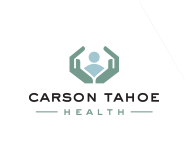When you experience a sudden, severe headache, you need to know if it’s a migraine vs. stroke to determine whether to wait it out or seek immediate medical treatment. Migraine attacks cause symptoms such as headache, aura, vomiting, and sensitivity to light. They can be incredibly painful and can cause your vision to blur.
Having what feels like the worst headache you’ve ever had is a common symptom of a hemorrhagic stroke, which is caused by bleeding in the brain. A headache will often precede ischemic stroke. Sometimes, however, a pounding headache might be a sign of a separate but related condition called a transient ischemic attack (TIA), also known as a ministroke.
Both the more serious ischemic strokes and TIAs occur due to a blockage in or disruption of blood flow to your brain. Whereas an ischemic stroke is likely to cause long-term damage, the effects of a TIA are more temporary. Still, if you have a TIA, you are likely to have a stroke and other serious medical complications. Since migraine symptoms and TIAs can look so similar, it is important to know the difference between a migraine vs. stroke.
Important Triggers to Keep in Mind
If your migraine includes a painful throbbing sensation, it’s likely because the nerve fibers within your brain’s blood vessels have become activated. While migraines can come on suddenly, many people develop them only after being triggered by some type of stress or external stimuli.
Some of the most common migraine triggers include:
- Bright or flashing lights
- Changing weather
- Excess alcohol consumption
- Heightened emotions
- Hormonal changes
- Lack of proper sleep
- Mental health disorders
- Prolonged stress
There are several different types of migraine. However, most migraines fall into one of two categories: with or without aura. Migraine with aura refers to severe headache accompanied by a series of visual disturbances. If you have aura symptoms, you might temporarily lose vision and experience a tingling sensation in your face and hands. You might also become confused and have trouble speaking.
Migraine without aura can feel like an intense, throbbing headache that causes fatigue and mood changes. You can usually treat these migraines by getting plenty of sleep and applying a cold cloth to your forehead. In most cases, you can manage migraine symptoms at home. However, if you have a sudden or severe headache or headache with other complications, like loss of vision or trouble with balance, speech or vision, seek medical attention.
Certain people have an increased risk of experiencing a migraine. Women experience migraines three times more often than men.
The One-sided Symptoms of TIAs
Migraine symptoms can be like signs of a stroke or TIA. You can differentiate between the two conditions by learning how TIA and stroke symptoms affect the body. While a migraine primarily affects your head and face, a ministroke typically affects one side of your body. If you are experiencing a TIA, you might:
- Be unable to move your hands or arms. While a migraine may leave your hands and arms feeling tingly, it should not inhibit your ability to move. If you cannot raise one or both of your arms, seek medical assistance right away.
- Feel most of the effects on one side of the body. If you notice unexplained heaviness in one side of your face or in only your right or left limbs, you might be having a TIA or stroke.
- Feel your face and smile drooping. One of the biggest differences between TIA and migraine is that a TIA can cause temporary face disfigurement. Pay attention to whether your face looks or feels normal.
- Be unable to speak clearly or coherently. Similar to migraines, TIAs can disrupt your cognition and cause confusion. Usually, if you have a migraine, you might struggle to speak or may need extra time to think before you speak. A TIA, however, might prevent you from speaking altogether or could severely inhibit your speech.
Don’t Face Migraines Alone: When to Take Action
Even if you suspect that you are experiencing a migraine and not a ministroke, it is still a good idea to call 911 or go to the ER if you are unsure. If you are experiencing a TIA, it is very important to get diagnosed and treated even if your symptoms stop. If left untreated for a prolonged period, your TIA might put you at increased risk for other medical complications.
Additionally, there is often a link between the type of headache you might experience from migraine and signs of a stroke.
If a person you know starts exhibiting symptoms of a stroke, you can take various steps to help, including:
- Call 911. Stroke can be a matter of life and death, so you should not delay in seeking immediate medical attention.
- Lay the person down with their head raised. It is important to keep the person’s upper body elevated and to properly support their neck.
- Ensure the person can breathe. Remove any tight or heavy clothing that may be blocking the person’s airflow and do not give them any food or drink.
- Support weak or immobile limbs. If you notice one side of the person’s body is stiff and will not move, try to support their limbs as best you can.
Find a Carson Tahoe provider who can help you find a solution to migraine pain and manage risk factors for stroke, such as high blood pressure.







